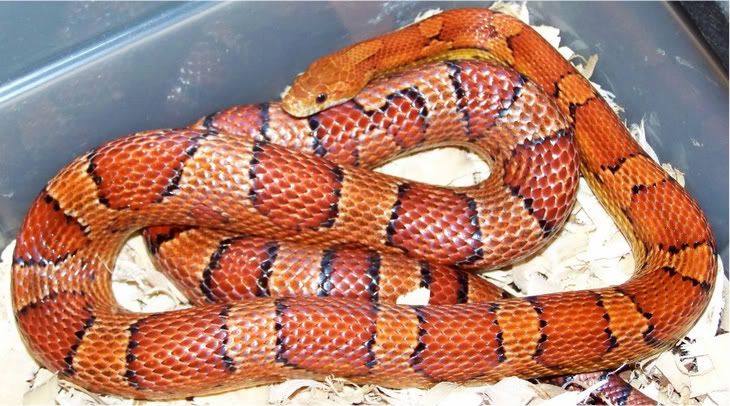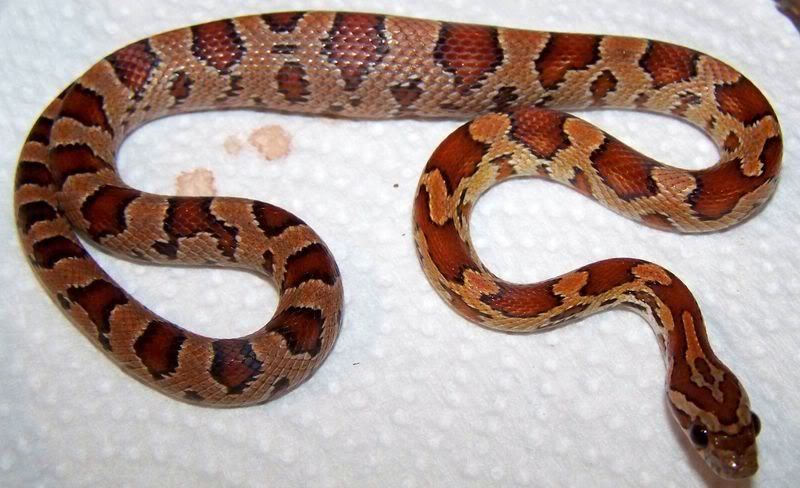lilwing89
New member
Disclaimer: Forgive me if this sounds a little pretentious - I know that I haven't been a long-time contributing member and I am fairly new to the concept of herpetology. Nonetheless, I think I know enough now to bring a fair debate to the table.
When I was first deciding what 'kind' of snake to get last year, I visited a lot of breeder sites and did a lot of research. I had an idea that there were different morphs/phases of snakes, but I knew just about as much as you'd expect a newbie to know. I was absolutely shocked by vast number of morphs I found and since I was overwhelmed with innumerable choices, I decided to stick with 'natural' CB phases and ended up with an Okeetee (which coincidentally, I still prefer over many morphs and phases!).
During my first twelve months of owning a snake, I learned a lot from observation and continued learning about snakes from various internet sources (This and that forum, Wikipedia, articles by herpetologists) More recently, I discovered how selective breeding can be harmful to [several of] the offspring it produces. I've read various threads on here and other forums and this and that source everywhere I've looked about customers purchasing CB snakes from breeders that suddenly, for apparently no reason, die after a few months of captivity... probably from health issues occurring as a result of selective [in]breeding. Given that so many neonates per clutch do not survive in nature for which ever [natural] reason, how do breeders justify selective breeding, knowing the possibility that their intervention could directly lead to unnatural health defects in neonates? I mean, if you take husbandry and breeding completely out of context and isolate it; just for the sake of breeding... not appealing to customer preferences or community/research, or personal interest.
Is that maybe a little too convoluted?
Another question I'd like to bring to the table is "What is the ultimate reason/purpose for selective breeding?"
I know this question has an obvious answer, though maybe not easily explained, or is ambiguous/subjective... but I'm asking out of rhetoric; what is the purpose of herpetology/keeping snakes if the interest of the majority in owning a snake is focused on some unnatural phase/morph from selective breeding/inbreeding? What happened to the 'natural' qualities of snakes and are they a popular choice among buyers? Are there any breeders or owners who prefer 'natural phases' to 'unnatural'?
Feel free to give your insight/disposition/argument. I'm interested in hearing any and all perspectives.
When I was first deciding what 'kind' of snake to get last year, I visited a lot of breeder sites and did a lot of research. I had an idea that there were different morphs/phases of snakes, but I knew just about as much as you'd expect a newbie to know. I was absolutely shocked by vast number of morphs I found and since I was overwhelmed with innumerable choices, I decided to stick with 'natural' CB phases and ended up with an Okeetee (which coincidentally, I still prefer over many morphs and phases!).
During my first twelve months of owning a snake, I learned a lot from observation and continued learning about snakes from various internet sources (This and that forum, Wikipedia, articles by herpetologists) More recently, I discovered how selective breeding can be harmful to [several of] the offspring it produces. I've read various threads on here and other forums and this and that source everywhere I've looked about customers purchasing CB snakes from breeders that suddenly, for apparently no reason, die after a few months of captivity... probably from health issues occurring as a result of selective [in]breeding. Given that so many neonates per clutch do not survive in nature for which ever [natural] reason, how do breeders justify selective breeding, knowing the possibility that their intervention could directly lead to unnatural health defects in neonates? I mean, if you take husbandry and breeding completely out of context and isolate it; just for the sake of breeding... not appealing to customer preferences or community/research, or personal interest.
Is that maybe a little too convoluted?
Another question I'd like to bring to the table is "What is the ultimate reason/purpose for selective breeding?"
I know this question has an obvious answer, though maybe not easily explained, or is ambiguous/subjective... but I'm asking out of rhetoric; what is the purpose of herpetology/keeping snakes if the interest of the majority in owning a snake is focused on some unnatural phase/morph from selective breeding/inbreeding? What happened to the 'natural' qualities of snakes and are they a popular choice among buyers? Are there any breeders or owners who prefer 'natural phases' to 'unnatural'?
Feel free to give your insight/disposition/argument. I'm interested in hearing any and all perspectives.



